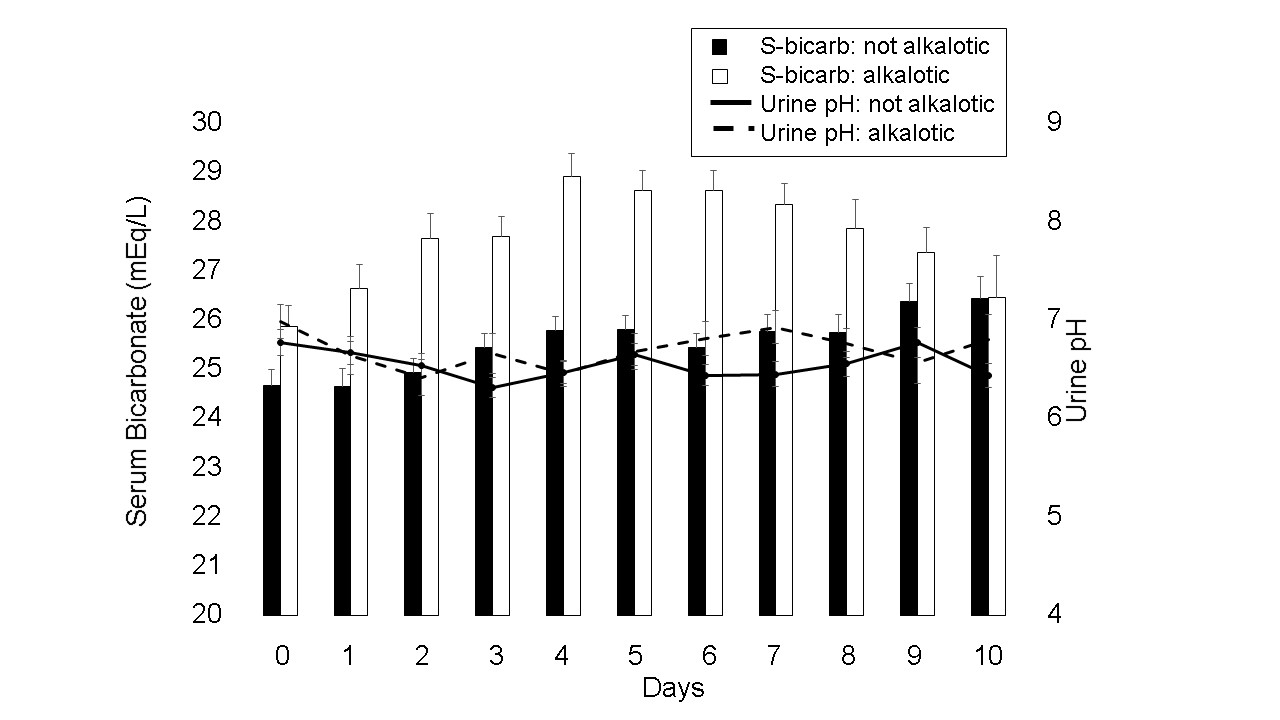Adolescent Medicine: Disordered Eating
Adolescent Medicine 3
508 - Impaired Urinary Alkalinization in Adolescents with Eating Disorders Hospitalized for Refeeding
Publication Number: 508.3
- KW
Katherine Wesseling-Perry, MD (she/her/hers)
Chief, Division of Nephrology
University of Arizona/Phoenix Children's Hospital
Phoenix, Arizona, United States
Presenting Author(s)
Background: We have recently shown that the development of metabolic alkalosis is common in adolescents with eating disorders hospitalized for refeeding.
Objective:
To characterize the pathogenesis of metabolic alkalosis in adolescents with restrictive eating disorders hospitalized for medical stabilization.
Design/Methods:
We conducted a retrospective review of sequential unique patients, ages 10-24, admitted to Santa Monica/UCLA hospital for nutritional rehabilitation from December 2018 to November 2020. We evaluated mean blood pressure, kidney function, serum bicarbonate and potassium concentrations, and urine pH values daily during the first 10 days of hospitalization. We analyzed urine calcium and chloride values in a subset of patients with high serum bicarbonate concentrations.
Results:
In 69 patients with restrictive eating disorders, serum bicarbonate concentrations were 25 + 1 mEq/dL on admission, but increased above the normal range (i.e. above 29 mEq/dL) in 33% of patients at some point in their admission. Admission eGFR was 83 (74, 95) and 87 (82, 112) ml/min/1.73m2 in patients whose serum bicarbonate remained stable and in those whose serum bicarbonate concentrations rose, respectively (NS between groups). Serum potassium levels were 4.2 + 0.1 mEq/dL and urine pH values were 6.8 + 0.1 on admission. Serum potassium and urine pH did not change in patients with stable serum bicarbonate concentrations or in patients with rising serum bicarbonate concentrations (Figure). Mean arterial blood pressures were 72.4 + 0.6 mm Hg on admission and did not change during hospitalization. Urine calcium/creatinine concentrations were below 0.2 mg/mg and urine chloride concentrations exceeded 40 mEq/L.
Conclusion(s):
Refeeding is associated with the development of a metabolic alkalosis in a significant proportion of patients with restrictive eating disorders hospitalized for nutritional rehabilitation, independent of impaired glomerular filtration and independent of behaviors such as diuretic abuse and vomiting. Impaired urinary alkalinization, low urinary calcium, high urinary chloride, and low-normal blood pressures suggest renal tubular dysfunction in segment(s) of the nephron distal to the thick ascending limb. Normal serum potassium concentrations suggest that this impairment is independent of secondary aldosteronism.
